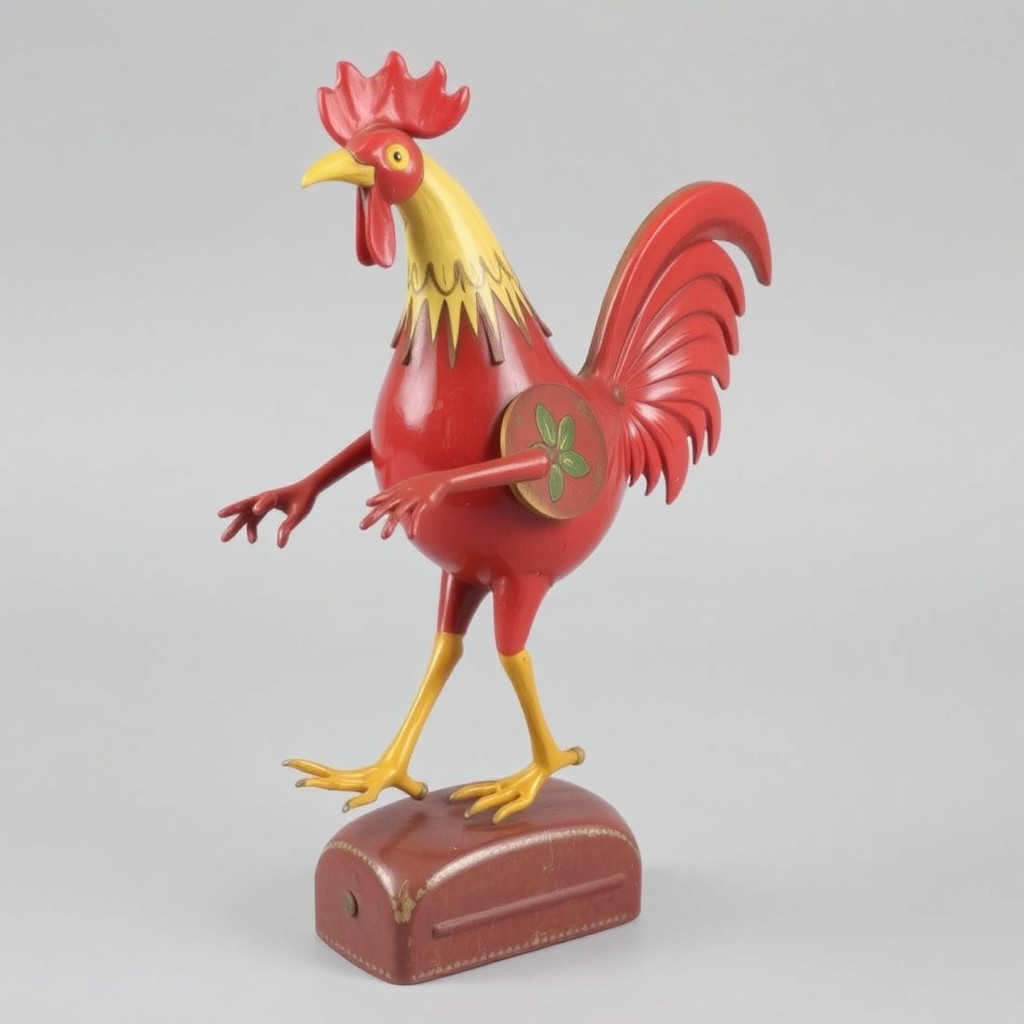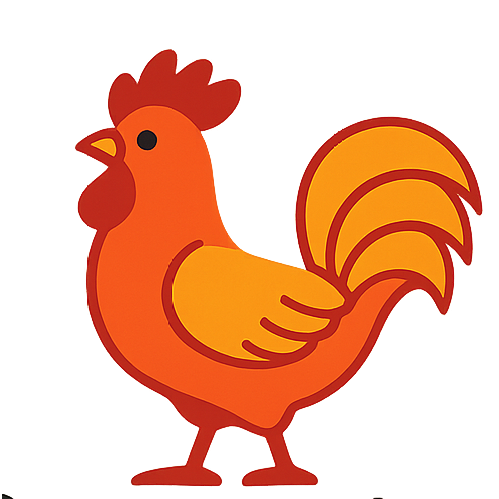The Story of Vintage Mechanical Toys
From court automata to mid-century marvels—discover how the Dancing Red Rooster fits into a centuries-long tradition of engineering, craft, and play.
Early Origins of Clockwork
From Automata to Playthings
Renaissance clockmakers showcased artistry with spring-driven automata—miniature theatres of motion for palaces and salons. These feats blended mathematics, metallurgy, and illusion.
Industry Makes It Accessible
By the 18th–19th centuries, better steels and standardized gears enabled repeatable mechanisms. Mechanical toys reached the burgeoning middle class, setting the stage for the 20th-century boom.
Key Milestones
- • 15th–16th c.: Spring automata in European courts
- • 18th c.: Precision gearing & early series production
- • 19th c.: Specialized toy makers and stamped tin
- • Early 20th c.: Global export of wind-up toys

1920s–1950s: The Golden Age
Makers refined cam systems, springs, and balance to produce lifelike motion. The Dancing Red Rooster exemplifies this period: enamelled tin, pressed bases, and a rhythmic side-step driven by a weighted cam.
Manufacturing Excellence
Small workshops assembled parts by hand—tuning cadence, checking stance, and aligning decals. The result: durable toys with personality and performance.
Cultural Impact
Learning Through Motion
Wind-up toys teach cause-and-effect, stored energy, and timing. Before formal STEM kits, children learned physics by hand—winding, releasing, observing cadence.
Objects of Aspiration
Mid-century families prized well-made goods. Mechanical toys symbolized craft and reliability—keepsakes passed between generations.
Why They Matter
- • Hands-on introduction to mechanics
- • Appreciation of enamel & tin craft
- • Family heirlooms with stories
- • Museum-worthy design & engineering
Clockwork Innovations
Cam geometry shifts the center of gravity to create the rooster’s dance. A well-tempered mainspring and trued base keep motion smooth; poor alignment causes scrape and wobble.
Materials & Finish
Period steels for springs, stamped tin shells, and layered enamel give durability and color depth. Felt accents and decals complete the character.
Decline & Revival
Electronics Take the Stage
In the 1960s–70s, lights and sound drew markets toward electronic toys. Many mechanical makers pivoted or disappeared; skills faded with retiring artisans.
Collectors Rediscover Craft
Today, enthusiasm is renewed. Museums, fairs, and communities celebrate workmanship—and the Dancing Red Rooster remains a standout subject for study and preservation.
Modern Relevance
- • STEM learning with heritage objects
- • Sustainable—repairable, long-lived
- • Strong provenance adds value
- • Conservation keeps history tangible
Legacy & Influence
Principles from vintage toys—durability, serviceability, and mechanical clarity—inform modern educational kits and design thinking. Collectors and museums preserve these lessons for future hands.
Why Preserve?
- • Document manufacturing techniques
- • Keep repair knowledge alive
- • Share cultural stories through play
- • Provide authentic learning tools
Timeline of Mechanical Toy Development
Learn More or Ask an Expert
We document variants, makers, and motion signatures of the Dancing Red Rooster. Send photos or visit our Paris studio.
